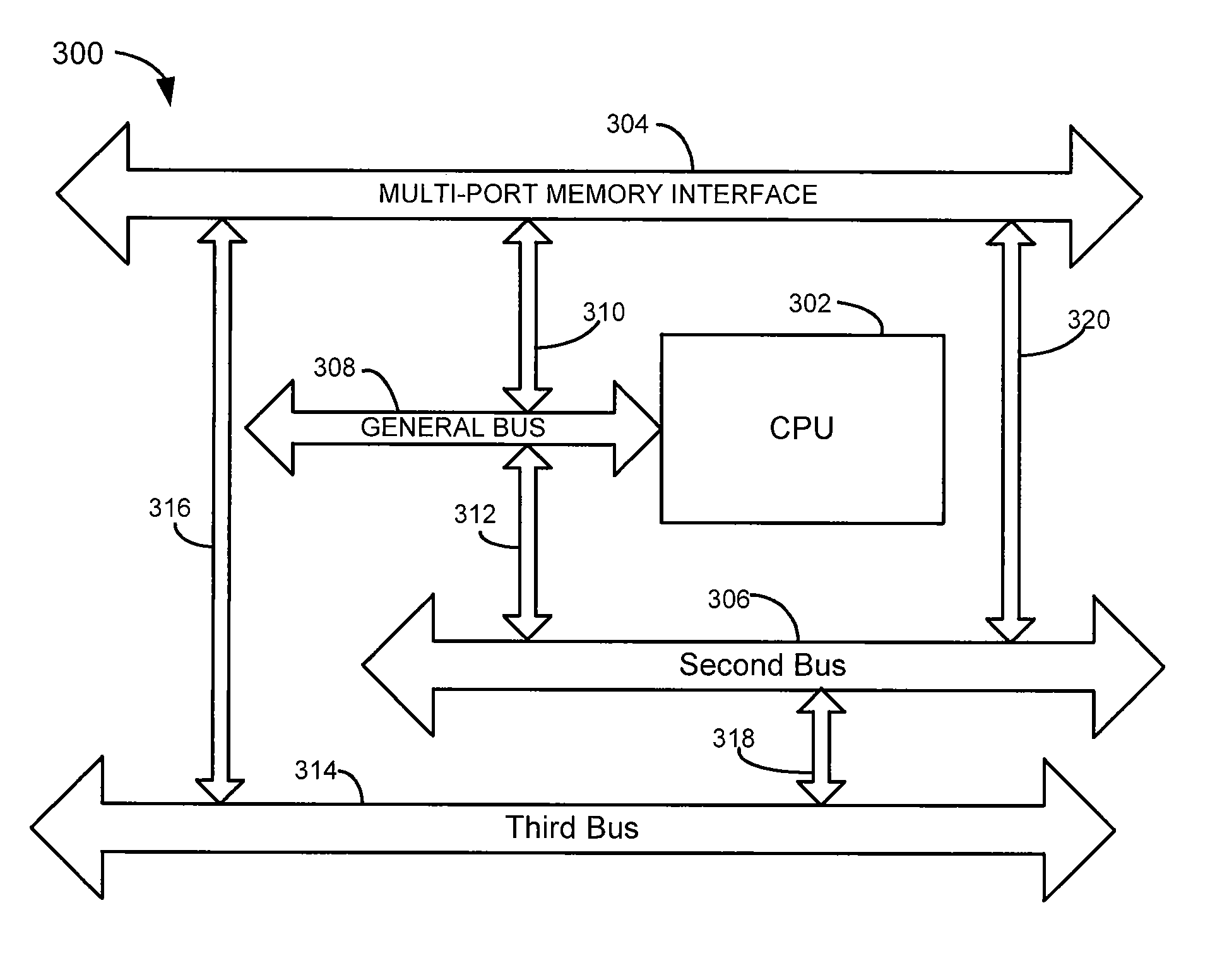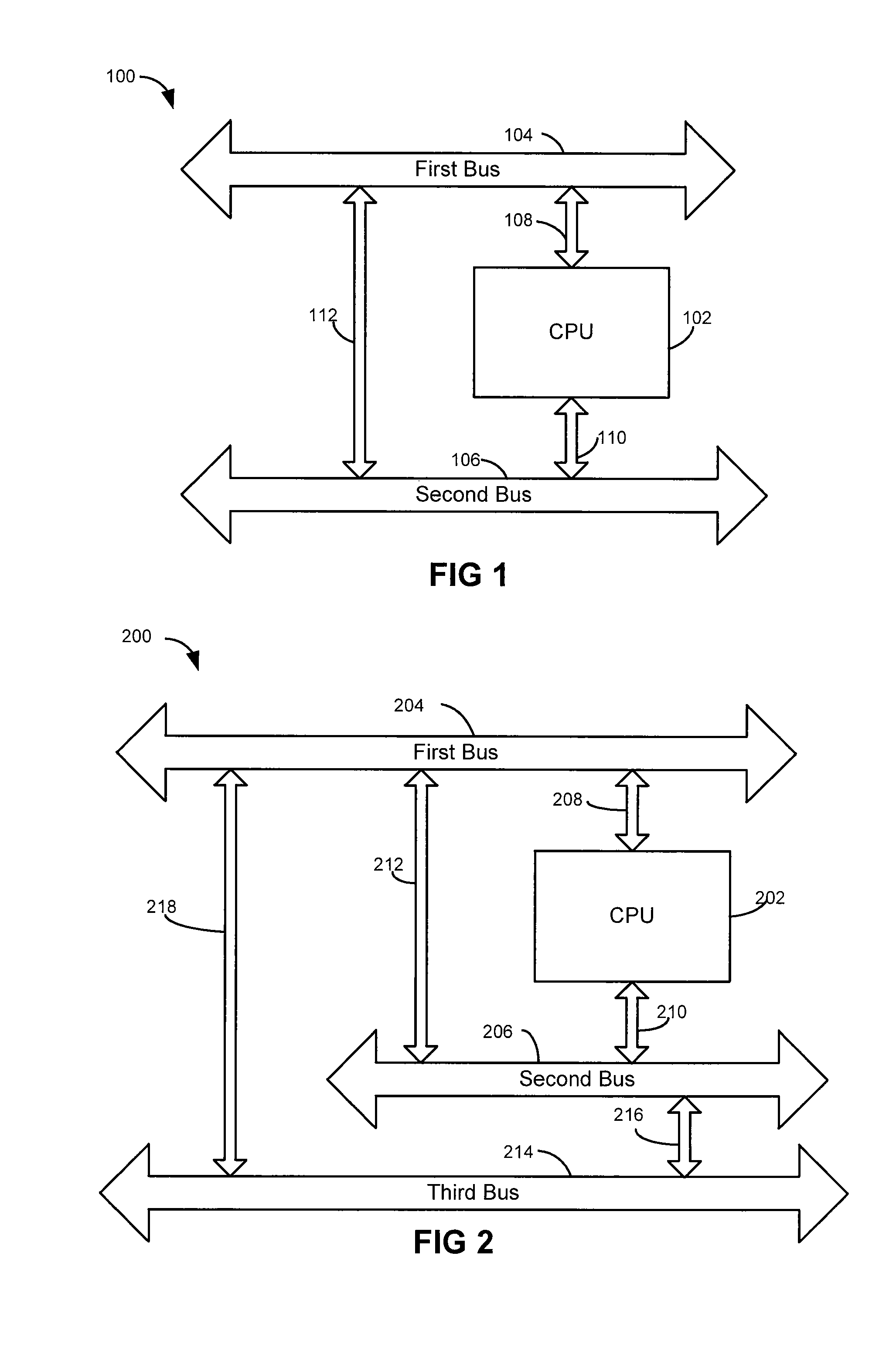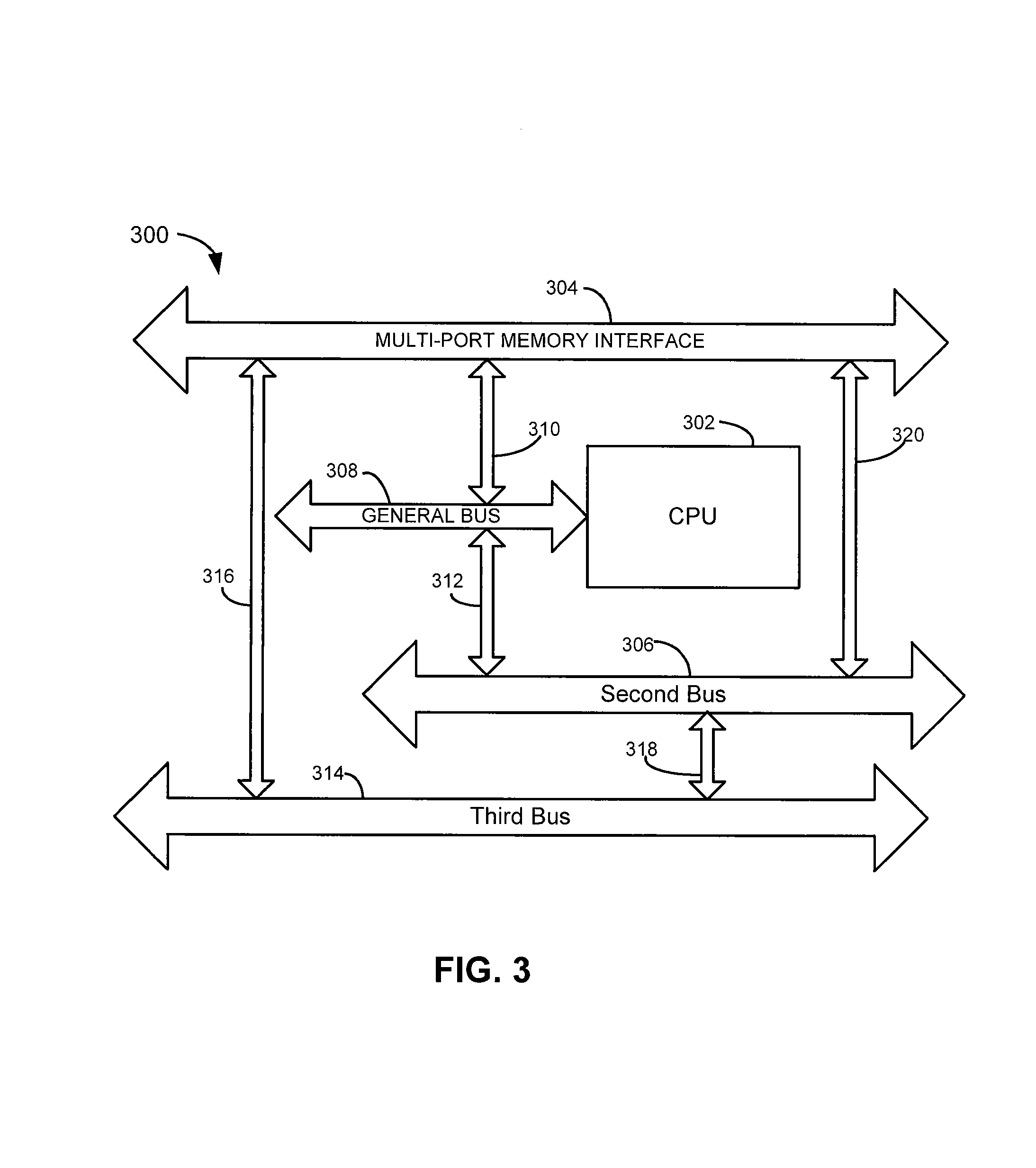Multi-port processor architecture with bidirectional interfaces between busses
a processor and bus technology, applied in the direction of instruments, electric digital data processing, etc., can solve the problems of processor centric and unbalanced prior art systems, bus latency can be problematic, and latency can be even more problematic, so as to reduce memory access latency, avoid bus latencies, and reduce latency
- Summary
- Abstract
- Description
- Claims
- Application Information
AI Technical Summary
Benefits of technology
Problems solved by technology
Method used
Image
Examples
Embodiment Construction
[0022]Throughout this description, the preferred embodiment and examples shown should be considered as exemplars, rather than limitations, of the present invention. The present invention, in accordance with various aspects, is directed to a multi-port processor architecture. The multi-port processor can be employed by system on a chip (SoC) designs to control the system aspects of the SoC.
[0023]Referring to FIG. 1, there is illustrated a system 100 in accordance with an aspect of the present invention. System 100 can be used for SoC designs. The system 100 comprises a CPU 102 that is coupled to a first bus 104 via a bi-directional interface 108. CPU 102 is also connected to a second bus 106 via bi-directional interface 110. A bi-directional interface 112, for example a bus bridge, is used to connect the first bus 104 to the second bus 106.
[0024]Optionally, bus 104 and / or bus 106 can be connected to a memory. For example, if a memory is coupled to the bus 104, then CPU 102 can use bi...
PUM
 Login to View More
Login to View More Abstract
Description
Claims
Application Information
 Login to View More
Login to View More - R&D
- Intellectual Property
- Life Sciences
- Materials
- Tech Scout
- Unparalleled Data Quality
- Higher Quality Content
- 60% Fewer Hallucinations
Browse by: Latest US Patents, China's latest patents, Technical Efficacy Thesaurus, Application Domain, Technology Topic, Popular Technical Reports.
© 2025 PatSnap. All rights reserved.Legal|Privacy policy|Modern Slavery Act Transparency Statement|Sitemap|About US| Contact US: help@patsnap.com



